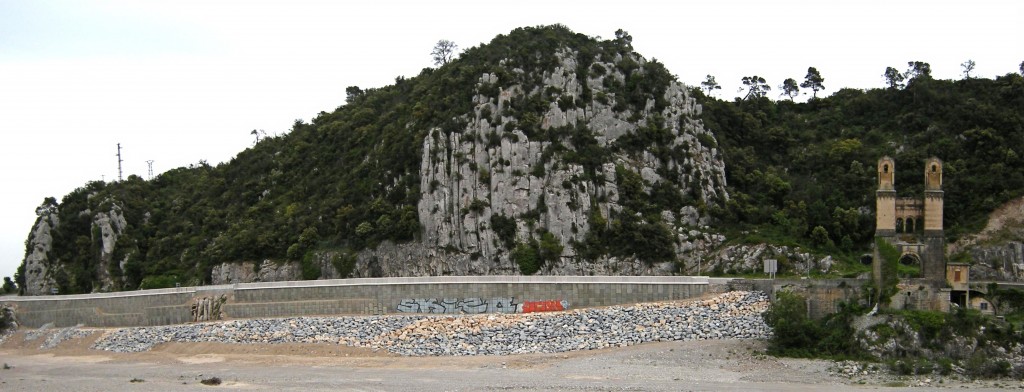ITER NEWSLINE
81
An architect for the Great Wall
Robert Arnoux
An architect for the Great Wall

Mimicking the main features of the landscape: the wall that supports a 400-metre stretch of the ITER Itinerary at the Pont de Mirabeau.
Earlier this year, the architect from Marseille was back at the Pont de Mirabeau with a new mission: to design the 400 metre-long, 10-metre-high wall that runs parallel to the Durance riverbed and holds the new, widened roadway leading to Saint-Paul-lez-Durance.
The passage through the gorge of Mirabeau is one of the most spectacular sections of the ITER Itinerary. Because of the presence of the old, pseudo-roman porticos of the 1847 bridge, it is listed among France's historical landmarks. And to make things even more complicated for an architect, the area is placed under the jurisdiction of the Historical Building Authorities of the four different départements which meet at the bridge.
"Because it holds the roadway for more than 400 metres, the wall is a very imposing structure," says Mascarelli. "But I did not want it to be a monster construction that would spoil the scenery." Minimalism, in this case, meant "mimicking" the main features of the landscape, leaving some natural rock jutting out of the wall face and breaking its monotony with terraces which will later be planted.
Mascarelli—to whom we owe the preservation of the four allegoric steles which decorated the 1934 bridge and which now stand in the centre of the roundabout at the southern entrance of the bridge—is a bit angry though. As soon as it was completed, the wall was defiled with three-metre-high graffiti. "I do not understand this lack of respect. You do your best to create something that will not impact the scenery and some Barbarians come and destroy it within the hour. To me, this is really heartbreaking ..."
return to Newsline #81


